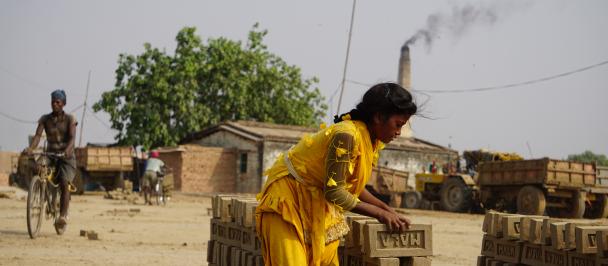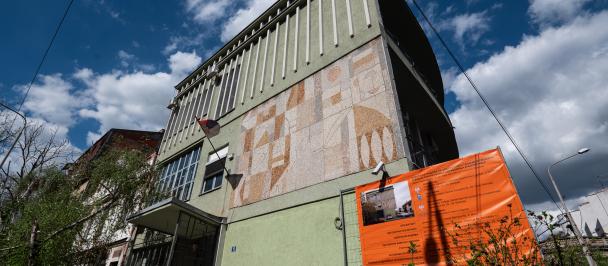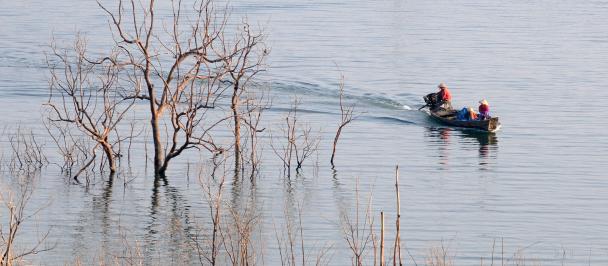NC 4: Global Boiling and Climate Change: Impacting every life across Thailand
April 28, 2024
Climate change is not just about the rising temperatures – it is a complex issue that multidimensionally affects parts of our lives. In Thailand, we are seeing rising temperatures, more frequent and severe floods from increased rainfalls each year, and harsher droughts. These impacts are felt nationwide, affecting all sectors from tourism to public health and national resource management. The tourism sector could suffer the losses of natural and cultural attractions due to climate change. Public health sector faces the risk of reemerging diseases. In the natural management sector, coastal erosion has cost the country up to THB 6,000 million in lost land, among many others.
"In the past 5-10 years, the coastlines have been gradually eroded. They are encroaching and blocking up canals, making it difficult for the fisher boats. If we were to build barriers, they would need to be continuous." - Sompong Detchsorn, Fisher, Ban Laem District, Phetchaburi Province
12 million farmers, or 1 in 6 of the Thai population, are the hardest-hit.
The agricultural sector should be the center of attention since it is directly affected by climate change. Currently, more than 12 million people in Thailand work in the agricultural sector, making it one of the country's main employment sectors. Data from the year 2020 shows that almost half of Thailand's land area is used for agriculture (46.54%), half of which being used for rice cultivation (46.04%). When the weather changes, such as rising temperatures and fluctuating rainfalls, farmers face increasing difficulties due to various risks. Paddy rice may suffer from flooding during the rainy season, while upland rice may face heat stress during harvest. In aquaculture, increased temperatures can lead to the death of fish, crabs, and other seafood. Livestock’s health, growth, and breeding are also impacted. Pigs breed less in hotter temperatures, chickens are more prone to diseases, and even calves can die from the heat.
"The rainwater is undrinkable unlike before, because it is believed that there are more airborne diseases. The air is hotter and more scorching than before. Leaves wither and die quickly." - Sanguan Wetamaha, 70 years old, Farmer, Waeng district, Narathiwat Province

Heat, drought and flooding exacerbate the plight of Thai farmers.
Although Thailand has millions of people working in agriculture, the agricultural sector still generates relatively low incomes compared to other sectors. Data from the Ministry of Commerce indicates that the agricultural sector contributes only 9% to the country’s GDP, while the Department of Agricultural Economics, Ministry of Agriculture and Cooperatives, reveals that in the year 2022, the average annual income per agricultural household was THB 80,271, approximately THB 6,689 per month.

From the data on Thailand's greenhouse gas inventory in the year 2018, the agricultural sector accounted for 15.69% of the total greenhouse gas emissions in the country yet it is a sector that is severely impacted and faces challenges to adapt, as agriculture heavily relies on weather conditions. When looking at the local level from Thailand's Climate Risk Map, which assesses the vulnerability to the impacts of climate change from three natural disasters: heat, drought, and flooding in the agricultural and food security sector, the risk from climate change shows significant inequalities. The provinces ranked as facing the highest risks from heat are all located in the northeastern region, including Nakhon Ratchasima, Ubon Ratchathani, Buriram, Khon Kaen, Si Sa Ket, Surin, and Roi Et, with Nakhon Ratchasima being the most at risk from heat, drought, and flooding.
*The risk maps analyze the evidence from 4 periods: 1970-2005, 2016-2035, 2046-2065, and 2081-2099, to identify the risks in the long term.
What are the other sectors affected by global warming, apart from agriculture?
The hazards of climate change impact all aspects of Thai society, affecting health, access to public utilities, and housing. The risk map presents the risks in 5 other sectors:

Water Management Sector
Water scarcity not only affects basic livelihoods but also leads to biodiversity loss, increased water pollution, and crop failures. Nakhon Ratchasima faces the

Natural Resource Management Sector
Besides biodiversity loss, Thailand faces coastal erosion of 1-5 meters annually over the past few years, impacting over 20 million residents. Chiang Mai and Ubon Ratchathani are the provinces with the highest number of population at risk.

Tourism Sector
Tourism plays a crucial role in Thailand’s economy, contributing 20-22% to the Gross Domestic Product (GDP). Climate change leads to the loss of cultural and natural tourism areas. Bangkok, Chiang Mai, and Phuket, where tourism revenues are the highest, are considered high-risk areas, with Trat, Surat Thani, and Nakhon Ratchasima following suit.

Human Settlement and Security Sector
In 2040, 74.3% of Thailand’s population will reside in urban areas, leaving only 1 in 4 people in rural areas. Climate change leads to disruptions in water supply, housing, and public services, affecting millions of urban residents. Bangkok, Nakhon Ratchasima, Samut Prakan, and Khon Kaen are among the most vulnerable provinces.

Public Health Sector
Climate change can lead to respiratory illnesses, malnutrition, and the resurgence of previously controlled or eradicated infectious diseases. Bangkok, Nakhon Ratchasima, Ubon Ratchathani, Khon Kaen, and Buriram are the provinces most at risk.

Climate change impacts everyone profoundly but tackling it requires cooperation at local, national, and global levels. With Thailand being vulnerable across various sectors, what kind of measures is the country pursuing to tackle climate change? Explore Thailand’s plans to reduce greenhouse gas emissions.

 Locations
Locations



